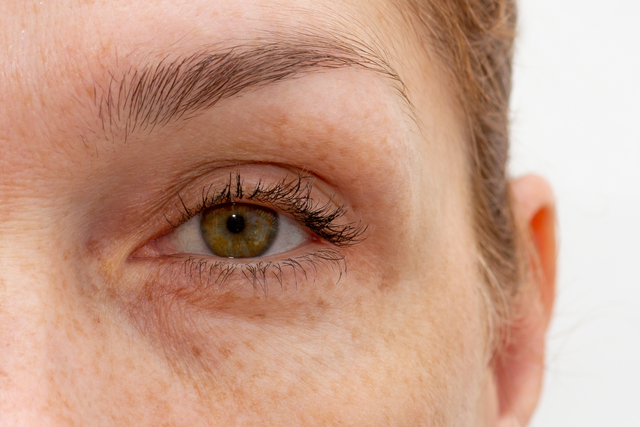Plaquenil Toxicity
Symptoms and Side Effects
Common Vision Symptoms of Plaquenil Retinopathy: Recognizing the Signs of Retinal Damage
Plaquenil retinopathy, the retinal damage caused by prolonged use of hydroxychloroquine, can be challenging to detect in its early stages because symptoms are often subtle or completely absent. Yet, this condition can progress silently until permanent vision loss has occurred. Recognizing the range of visual symptoms, especially as they evolve from early to advanced stages—is critical for timely diagnosis, treatment decisions, and, in some cases, pursuing legal remedies for failure to monitor appropriately.
Early Signs: Often Asymptomatic
One of the most dangerous aspects of Plaquenil toxicity is that it is frequently asymptomatic in its early stages. Patients may feel they are seeing normally, even as retinal cells begin to deteriorate. This is because the earliest damage typically affects peripheral photoreceptors in specific patterns, sparing the central visual field until the disease progresses.
According to the American Academy of Ophthalmology, most patients with early retinopathy do not report visual symptoms until measurable retinal changes have already occurred on imaging tests like OCT or visual field mapping.
This “silent” phase reinforces the importance of routine screening, especially after 5 years of use or in the presence of risk factors such as high dosage or renal disease.
Paracentral Scotomas: The Hallmark Functional Symptom
The most characteristic symptom of Plaquenil toxicity–when it does occur–is a paracentral scotoma.
- A scotoma is a blind spot or area of reduced vision within the visual field.
- A paracentral scotoma affects the area just outside the center of vision, which is critical for activities like reading, recognizing faces, and tracking moving objects.
Patients may describe this symptom as:
- A blurred or dim patch in their sight when focusing on an object
- Letters or words “missing” from a line while reading
- A sense that something is “off” or irregular in their central field, especially in bright light
Visual field testing (e.g., 10-2 Humphrey field tests) often reveals these scotomas before the patient becomes aware of them, but in attentive individuals, this may be the first subjective sign that something is wrong.
Difficulty Reading and Peripheral Vision Changes
As the condition progresses, patients may begin to experience:
- Difficulty reading, particularly with small print or under low-contrast lighting
- “Missing” letters or parts of words that appear and disappear unpredictably
- Trouble transitioning from bright to dim environments or adjusting to glare
- Peripheral vision changes, especially in those with extramacular or pericentral involvement
Patients of Asian descent, in particular, may exhibit a more peripheral pattern of retinal damage, which can lead to visual field defects further from the center – making it harder to detect through typical macular testing
Advanced Symptoms: Bull’s-Eye Maculopathy and Central Vision Loss
If Plaquenil toxicity is not detected and the drug is continued, the condition can advance to a bull’s-eye maculopathy – a classic sign of hydroxychloroquine-induced retinal damage. This appearance refers to:
- A ring of retinal damage surrounding a relatively preserved foveal center (the bull’s-eye)
- Visible retinal pigment epithelium (RPE) depigmentation on fundus examination or autofluorescence imaging
At this stage, patients may begin to report central vision problems, such as:
- Distorted vision (metamorphopsia)
- Straight lines appearing wavy
- Dark or blank spots directly in the center of vision
- Difficulty recognizing faces or reading large print
Eventually, if the damage progresses through the fovea – the point of sharpest vision – patients can suffer legal or functional blindness, even if their peripheral vision remains intact.
Additional symptoms to look out for include:
Blurred Vision and Difficulty Focusing
Blurred vision is one of the earliest and most common signs of Plaquenil toxicity. You may notice difficulty focusing on objects both near and far, even if you normally have clear eyesight.
Trouble Seeing in Low Light or at Night
Night driving or moving around in dimly lit environments can become challenging. Plaquenil toxicity can make your eyes less able to adapt to low light conditions.
Eye Pain and Discomfort
While less common, Plaquenil toxicity can cause aching, pressure, or general discomfort in the eyes. Persistent pain should be evaluated by an eye care professional.
Loss of Peripheral Vision or Visual Field Defects
Plaquenil-related vision loss can affect your side vision (peripheral vision) or create missing spots in your field of view. This may make activities like driving or navigating crowded areas more difficult.
Changes in Color Perception, Especially Red
Some patients develop difficulty seeing certain colors accurately, particularly shades of red. This change in color vision can develop gradually and may go unnoticed without testing.
Floaters, Glares, and Flashing Lights
Visual disturbances such as floating spots, increased glare, halos around lights, or flashing lights may occur as toxicity progresses. These symptoms should not be ignored.

Diagnosing Eye Damage
Proper screening for Plaquenil-induced retinal toxicity is critical, as damage often begins without any visible symptoms. Here is a closer look at how Plaquenil-induced eye damage is diagnosed.
Early detection is critical. The American Academy of Ophthalmology recommends regular eye screenings for anyone on long-term Plaquenil therapy, especially after five years of use—or sooner for high-risk patients. If your doctor failed to follow these guidelines and you’ve experienced vision problems, you may have a valid Plaquenil toxicity claim.
Do I Have a Plaquenil Toxicity Case?
If you’ve suffered vision loss or other complications due to long-term Plaquenil use, you might be wondering whether you have grounds for a medical malpractice claim. You may have a case if:
Plaquenil Vision Damage
You were prescribed Plaquenil and developed signs of retinal toxicity or vision damage.
Ignored Early Symptoms
Your healthcare provider ignored symptoms or failed to act when early signs of toxicity appeared.
Failed to Monitor/Test
Your doctor failed to monitor your eyes regularly with appropriate testing (such as OCT or visual field tests).
Uninformed Plaquenil Risks
You were not informed about the risks or given proper warnings about Plaquenil’s long-term effects.

Each case is unique. Our experienced Plaquenil lawyers offer free consultations to evaluate your situation and help you understand your legal options. We will review your medical records, consult with expert witnesses, and determine whether medical negligence occurred.
We believe that everyone deserves to be heard.
Reach out today to speak with someone who’s ready to stand with you.


